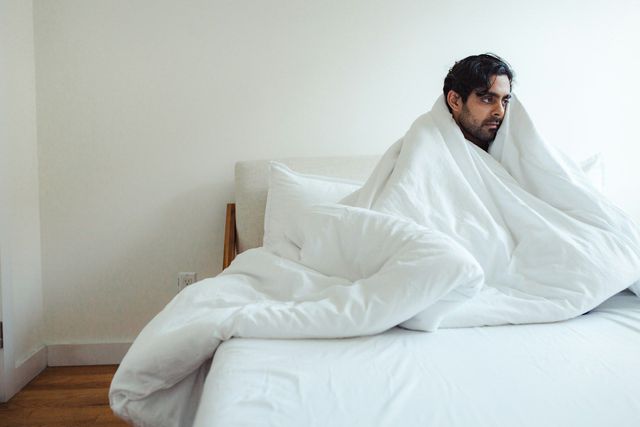Sleep apnea is a common yet serious sleep disorder that affects millions worldwide, often leading to interrupted breathing during sleep. Continuous Positive Airway Pressure (CPAP) therapy is one of the most effective treatments for managing this condition, helping individuals breathe more easily and enjoy a restful night’s sleep. In this comprehensive guide, we will explore what CPAP therapy entails, its health benefits, and how to choose the right CPAP machine. Additionally, we’ll cover essential tips for proper usage and maintenance, discuss potential challenges, and provide insights into alternatives for those seeking other options. Whether you’re new to CPAP or looking to optimize your therapy, this guide has you covered.
xishoot.xyz will lead a thorough examination of this topic.
1. What is CPAP Therapy?
Continuous Positive Airway Pressure (CPAP) therapy is a common treatment for obstructive sleep apnea (OSA). OSA is a condition where the airway repeatedly closes during sleep, leading to pauses in breathing. A CPAP machine delivers a constant flow of air through a mask worn over the nose or mouth. This steady stream of air pressure keeps the airway open, preventing the breathing interruptions that are characteristic of sleep apnea. The uninterrupted flow of air ensures normal breathing and restful sleep.
CPAP therapy is the standard treatment for obstructive sleep apnea (OSA), particularly moderate to severe cases. It is prescribed following a sleep study that confirms the presence of OSA. CPAP therapy effectively reduces or eliminates the apneas, hypopneas (partial airway blockages), and snoring that characterize OSA, leading to improved sleep quality and reduced health risks. Although CPAP therapy requires consistent use and some adjustments, it has been a life-changing solution for many individuals with sleep apnea.

2. Health Benefits of CPAP Therapy
CPAP therapy delivers a multitude of health advantages for people with obstructive sleep apnea (OSA). A primary and readily apparent benefit is the enhancement of sleep quality. CPAP therapy, by maintaining an open airway throughout the night, minimizes breathing disruptions, facilitating uninterrupted sleep cycles. This results in improved rest and can markedly decrease daytime fatigue and sleepiness, thereby enhancing overall alertness and cognitive function.
Consistent use of CPAP therapy significantly decreases the risk of serious health complications linked to untreated sleep apnea. These complications include cardiovascular issues such as hypertension, heart disease, and stroke. By maintaining steady oxygen levels throughout the night, CPAP therapy reduces stress on the heart and other essential organs.
Furthermore, numerous users experience a reduction in snoring and other sleep disruptions, a benefit that extends to their partners and family members, leading to improved sleep quality for all. In conclusion, CPAP therapy serves as an essential tool in the management of sleep apnea, significantly enhancing both immediate and long-term health outcomes.

3. Choosing the Right CPAP Machine
Selecting the right CPAP machine is essential for effective therapy and user comfort. The first consideration is the type of CPAP machine that best suits your needs. Standard CPAP machines deliver a continuous, fixed air pressure, while BiPAP (Bilevel Positive Airway Pressure) machines offer different pressure levels for inhalation and exhalation, which can be beneficial for those who find it difficult to exhale against a constant pressure. APAP (Automatic Positive Airway Pressure) machines adjust the pressure automatically based on your breathing patterns throughout the night, providing a more tailored experience.
Comfort features are also crucial when choosing a CPAP machine. Look for models with adjustable ramp settings, which gradually increase air pressure as you fall asleep, making it easier to adapt. Humidifiers can be integrated or added to prevent dryness in the airways, enhancing comfort during use.
Portability and noise levels are additional factors to consider, especially for those who travel frequently or are sensitive to sound. Ultimately, selecting a machine that fits your specific needs and lifestyle will contribute to a more successful CPAP therapy experience.

4. Proper Usage and Maintenance of CPAP Equipment
Proper usage and maintenance of CPAP equipment are crucial for ensuring the effectiveness of your therapy and prolonging the life of your device. To start, it’s important to wear the CPAP mask correctly each night, ensuring a snug fit without overtightening. This helps prevent air leaks and maximizes the therapy’s benefits. It’s also essential to use the machine consistently, as skipping nights can reduce the overall effectiveness of the treatment.
Regular cleaning of the CPAP equipment is necessary to maintain hygiene and prevent issues such as bacterial buildup, which can lead to respiratory infections. The mask, tubing, and humidifier chamber should be cleaned daily with mild soap and water, and the air filter should be replaced as recommended by the manufacturer. Additionally, the humidifier should be filled with distilled water to avoid mineral deposits and potential damage.
Routine checks for wear and tear on the mask, tubing, and other components are also important. Replacing worn-out parts promptly ensures that the equipment continues to function correctly. By following these maintenance guidelines, users can ensure that their CPAP therapy remains effective and that their equipment remains in good condition over time.
6. CPAP Alternatives: When and Why to Consider Them
CPAP therapy can be challenging, especially at the beginning. One common issue is mask discomfort or irritation. To find the right fit and maximize comfort, experiment with different mask styles and sizes. Nasal pillows, full-face masks, and nasal masks provide varying levels of comfort and coverage, so finding the right one for your needs is important.
Dryness or congestion from the airflow presents another challenge. However, using a CPAP machine equipped with a humidifier can mitigate these issues. By adding moisture to the air, the humidifier helps make breathing more comfortable.
Some users experience difficulty exhaling against the constant pressure, which can be managed by adjusting the machine’s ramp settings or considering a BiPAP machine, which offers lower pressure during exhalation.
Finally, feeling claustrophobic or anxious while using the CPAP machine is not uncommon. Gradually increasing the time spent wearing the mask while awake can help users acclimate to the sensation, making it easier to sleep with the device over time. Overcoming these challenges is key to achieving long-term success with CPAP therapy.
7. Tips for Long-Term Success with CPAP Therapy
Achieving long-term success with CPAP therapy requires commitment and ongoing management. First, establish a consistent routine by using the CPAP machine every night, even when traveling. Consistent use helps maintain the benefits and ensures that you adapt to the therapy.
Regular follow-ups with your healthcare provider are essential to monitor your progress and address any issues. They can help adjust your settings or suggest changes if you’re experiencing discomfort or insufficient relief.
Maintaining your equipment is crucial; clean and inspect the mask, tubing, and filters regularly to prevent infections and ensure optimal performance. Replacing worn-out parts as needed will keep your therapy effective.
Address any concerns or difficulties promptly, whether they are related to comfort, air pressure, or any other issues. Seeking support from a sleep specialist or joining a CPAP user group can provide valuable tips and encouragement.
Finally, focus on overall health and lifestyle changes, such as weight management and avoiding alcohol, which can enhance the effectiveness of your CPAP therapy. By following these tips, you can maximize the benefits of your CPAP treatment and improve your overall quality of life.
CPAP therapy is a vital tool for managing sleep apnea, offering significant health benefits and improving quality of life. By understanding its function, choosing the right equipment, and maintaining consistent use, you can overcome common challenges and ensure long-term success. Embrace these strategies to enhance your sleep and overall well-being.
xishoot.xyz
